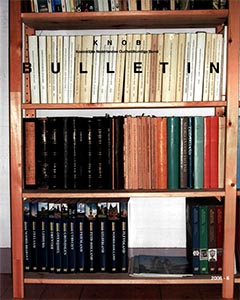Indexering ESCI / Scopus


Fons Asselbergs: Een KB kan worden ingetrokken. Ronald Stenvert: Naar een cultuurtopografie: Monumenten in Nederland, de serie. Erik Kleijn: Monumenten in Nederland en de Rijksdienst. Monumentenbeschrijving nu en straks. Rob Dettingmeijer: Monumenten, geschiedenis en zorg. Gabri van Tussenbroek: Architectuur- en bouwhistorisch onderzoek ten behoeve van monumentenzorg. Hans Renes: Monumenten in Nederland en de historische geografie.
Until recently, by Royal Decree (KB) of 7 July 1903, work still proceeded on the ‘Geïllustreerde Beschrijving van de Nederlandse Monumenten van Geschiedenis en Kunst’. Thus the governmental committee defined the instruction to draw up and publish an inventory and a description of Dutch monuments and historic buildings; teams of public servants only sparsely carried out this instruction.
This earliest descriptive task was aimed at distinguishing values that were of such general interest that they deserved the protection of the national government. At the time the struggle...
With the publication of the twelfth and last part in July 2006 the series ‘Monumenten in Nederland’ was completed after more than ten years. For the first time in a long while a general survey has thus become available covering the entire Netherlands, presenting a coherent overview of the cultural-historically most valuable structures and objects. Although it comprises fewer volumes, but is of a larger format and contains more illustrations, the series can measure up to ‘The Buildings of England’ of Nicolaus Pevsner, published between 1951 and 1974.
In ‘Monumenten in Nederland’...
The preservation of the built architectural heritage is inextricably bound up with an accurate description of that heritage. This insight is universal and internationally undisputed and has been the foundation of the description of monuments and historic buildings in the Netherlands since the second half of the nineteenth century.
In this article the description of such historic buildings by the government is under discussion because of various current social changes, four of which are further clarified. Firstly, under political pressure the national government is shrinking,...
This contribution is an adaptation of the theme of Monuments and historic Buildings in the Netherlands and their architectural history, which forms part of the KNOB workshop in Zeist. This series fits in with the tradition of art-topographical works of Dehio and Pevsner.
For a long time architectural-historical research was directly linked up with the national preservation of monuments and historic buildings. It is ironical that a selective survey of the built and still existing stock of historic buildings in the Netherlands has now been published, for recent research at...
Architectural-historical research only contributes to a limited extent to the solution of practical problems during restorations. Preliminary thorough building-historical research is not always a matter of course. Moreover, the subject of history of building construction is lagging behind in comparison with the countries around us.
In the Netherlands applied research of historic buildings particularly proceeds from the (governmental and municipal) departments of preservation of monuments and historic buildings and from private initiative. Hardly any building-historical research...
The series ‘Monumenten in Nederland’ presents a splendid survey of the monumental buildings in the Netherlands. In the study - though not in the field yet - the series has taken the place of the time-honoured ‘Kunstreisboek’ (art guidebook). Compared to previous editions the latest edition of the ‘Kunstreisboek’ already paid more attention to the structure of villages and towns and thus to the context of the historic buildings. However, on this point there is still something to be desired. This contribution looks at the new series of books from a historical-geographical perspective and,...


open access mogelijk gemaakt door Stichting OpenAccess
